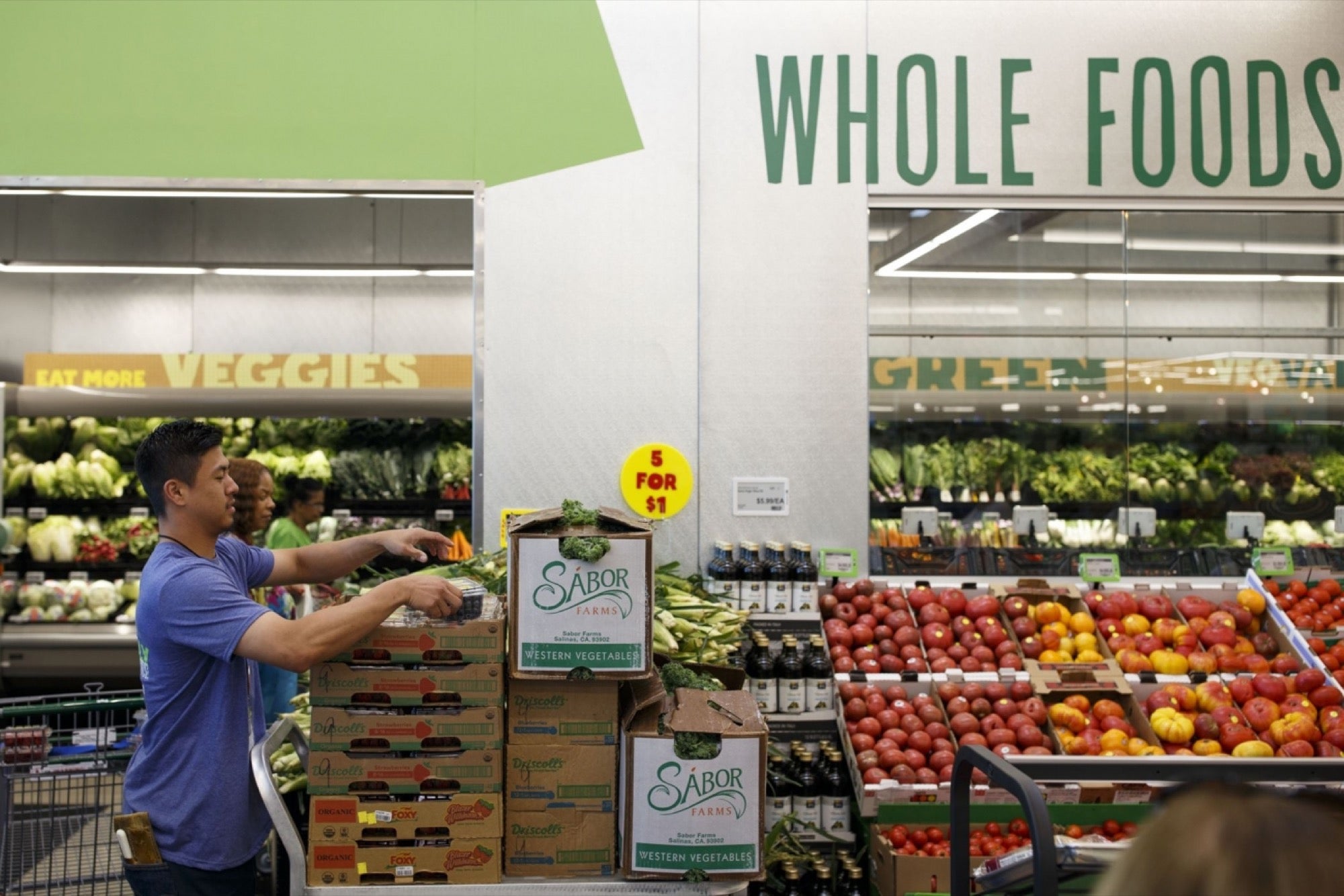Why Amazon's Acquisition of Whole Foods Is a Lesson in Committing to Employees On paper, Whole Foods' employee-first mentality and Amazon's customer-first motto couldn't be a worse match.
By Paul Warner Edited by Dan Bova

Opinions expressed by Entrepreneur contributors are their own.

In the year's growing list of mergers and acquisitions, Amazon's purchase of Whole Foods has dominated media attention. However, while news outlets have been quick to hypothesize what the purchase means for both brick-and-mortar and online grocery, it's worth stepping back to think through an overlooked part of the acquisition -- employees.
Related: Don't Lose Your Top Employees Because of Brownout
As the ink dries on the early August deal, attention has mostly focused on customers. This comes as little surprise, with recent price cuts and other shopping/purchasing conveniences setting the stage for a new era of grocery. With consumers and high-ranking internal players on board, Amazon and Whole Foods must now address the impacts of this acquisition on employees.
As they do, businesses of all sizes can learn a thing or two in the process.
Lesson 1: Don't choose between customers and employees.
Amazon and Whole Foods' priorities could not be more distinct under the old model, with the former geared toward consumers and the latter toward employees. Whole Foods has historically treated its nearly 100,000 employees lavishly, while alienating some consumers with high prices. Amazon, on the other hand, has built its empire around generous shipping speeds and return policies amid a dangerously intense internal company culture.
On paper, Whole Foods' employee-first mentality and Amazon's customer-first motto couldn't be a worse match. But, with each company an expert in its own right, Amazon and Whole Foods have a unique opportunity to blend their individual approaches and bring the best of each to the forefront. Customer and employee needs are not mutually exclusive, and neither should be the strategies and solutions used to listen to them.
Instead, by listening to both groups at once, stakeholders can pursue data-driven insights that go beyond traditional feedback metrics like turnover and attrition. The right technology can not only elevate employee voices, but actually unites customer and employee feedback for an improved and more reciprocal experience.
Related: Here's the Secret to Improving Employee Engagement That Every Company Can Afford
Lesson 2: Increase calls for unstructured feedback.
To put employees and customers in conversation, businesses must seek out feedback platforms committed to not only gathering, but analyzing unstructured data.
Popular CX metrics like Net Promoter Scores (NPS) are misleading and don't adequately reveal what's going on inside the heads of employees and customers. Conversely, unstructured data gives employees and customers the space to comment on bottom-line critical human factors like staff helpfulness, friendliness and attentiveness.
Consider the following scenario: After experiencing major difficulties checking out at Whole Foods, a customer leaves the store frustrated. At first glance, this situation may seem like a one-time technical issue, but in talking to both the customer and employee present for this exchange, we can see that the best solution is hardly black and white.
After reaching out to the customers (as Amazon might), stakeholders learn that our shopper's frustrations started well before final purchase. Not only was the store out of her favorite cereal, but she also waited for 10 minutes in the checkout queue -- points of friction a traditional satisfaction scale would have missed. Then, in talking to the employee (as Whole Foods might), it's revealed that the cashiers routinely feel understaffed. This employee also explains that he has little experience working with the store's new automatic chip readers.
Related: Follow These 9 Steps to Copy Zappos' Exceptional Customer Service Strategy
Combined, these feedback sources point to a solution that's best for everyone. The customer's feedback alone may have resulted in simple IT updates or better shift management. But, adding the employee's input pushes for a more full-scale training initiative around new services and technologies -- creating an improved experience for both employees and shoppers.
Putting it all together
Micro-moments like these exist throughout all stages of the grocery or retail experience, and engaged employees are eager to share when given the chance. There's a reason two-thirds of employees would leave a job due to feeling underappreciated. Employees simply want to be heard -- but don't take my word for it. Ask them.
The same goes for customers. Offered a platform, shoppers are incredibly willing to give voice to what's working with their relationships with brands and what's not (this is already happening daily on Twitter). With so many voices to hear, businesses can again turn to sophisticated feedback platforms. These solutions are equipped with advanced analytics that can handle engagement needs at scale.
And with the combined reach of Amazon and Whole Foods, scale will be a top concern for the companies moving forward. While Amazon has earned access to more consumers via Whole Foods' existing pool of shoppers, it's also now responsible for many new employees -- employees who are used to top treatment, and having their voices heard. Fortunately, all signs point to Amazon being ready to listen.
Related Video: How to Engage Your Customers and Employees Using Social Media and Live Streaming











